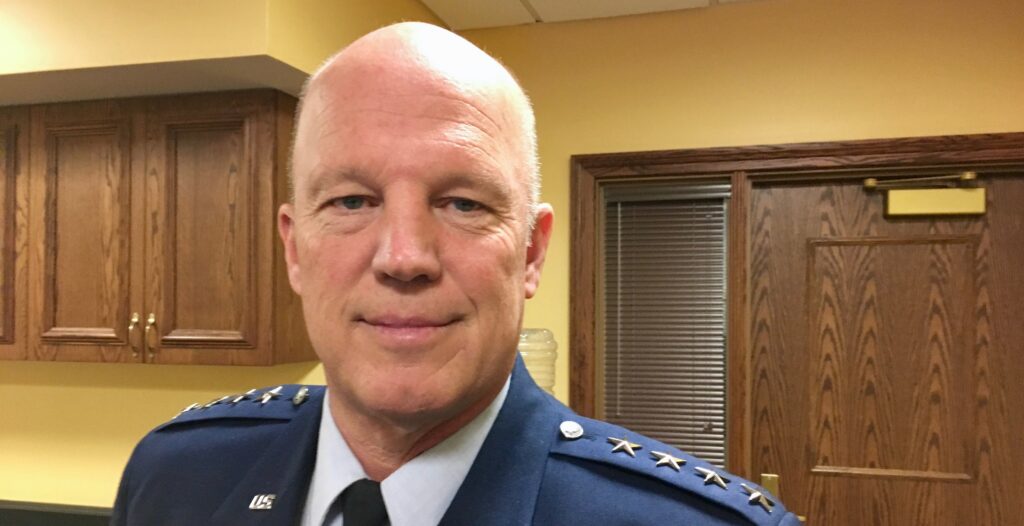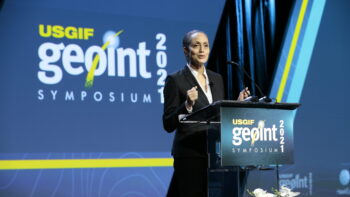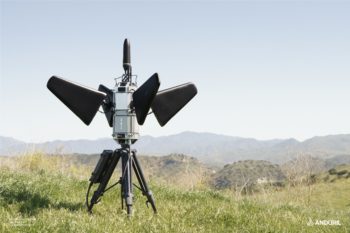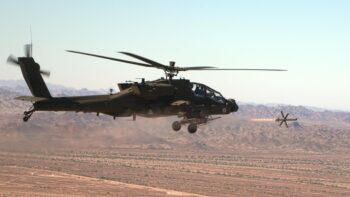
Gen. Jay Raymond, Commander, Space Command
WASHINGTON: Space Command (SPACECOM) head Gen. John Raymond today announced two new subcomponent commands and their leaders: one for day to day operations including with allies; the other to “conduct space superiority operations.”
Raymond yesterday told reporters at the Pentagon the two new subcommands were being stood up — giving us a whole new set of acronyms to be learned. He did not, however, provide the names of the new leadership or the exact breakdown of their functions.
“To ensure USSPACECOM can conduct its mission decisively, I am establishing two subordinate commands with distinct and defined mission areas to ensure the command is postured to protect and defend, while also increasing joint warfighter lethality and strengthening partnerships,” Raymond said in today’s release.
The Combined Force Space Component Command (CFSCC), commanded by Air Force Maj. Gen. Stephen Whiting, will “plan, integrate, conduct, and assess global space operations” for both US commanders and those of allies and partners, according to a SPACECOM press release.
Whiting was formerly head of the 14th Air Force and deputy Joint Force Space Component Commander at Strategic Command (STRATCOM) at Vandenberg AFB.
The CFSCC will work through four existing centers of operations that previously reported to Strategic Command (STRATCOM): the Combined Space Operations Center (CSpOC) at Vandenberg that includes allied partners; the Missile Warning Center at Cheyenne Mountain Air Force Station, Colorado; the Joint Overhead Persistent Infrared Center at Buckley AFB, Colorado; and the Joint Navigation Warfare Center located at Kirtland AFB, New Mexico. “Additionally, CFSCC executes tactical control over a number of Air Force, Army, and Navy space units,” the press release explains.
The Joint Task Force Space Defense (JTF-SD), commanded by Army Brig. Gen. Tom James, will “conduct space superiority operations in unified action with mission partners to deter aggression, defend space capability, and when directed, defeat adversaries throughout the continuum of conflict,” the release said.
James previously served as director of operations and exercises at the Joint Force Space Component Command. Breaking D readers will remember that James announced that one of SPACECOM’s initial focuses would be satellite communications, under a new SATCOM Integrated Operations Division.
The JTF-SD will oversee the National Space Defense Center (NSDC) at Schriever where the Intelligence Community’s space operations are integrated with the military. The NSDC is at the heart of the new “unified defense concept of operations” announced Aug. 20 at the National Space Council meeting by Acting Director of National Intelligence Joseph Maguire and Chairman of the Joint Chiefs of Staff Gen. Joseph Dunford. As we reported, that plan would for the first time put the National Reconnaissance Office’s fleet of spy satellites under the control of the US military during conflict.
It also will oversee the “Space Situational Awareness Units and Emerging Space Defense Units” formerly assigned to STRATCOM, the release said.
“Over the past decade, our great power competitors have developed technologies that threaten our critical national assets in space,” Raymond added. “The U.S. has no desire to see a conflict in space, and we are working hard to ensure no country believes they can gain a terrestrial advantage by extending a conflict to space. It’s important to understand that, like all nations, we have the inherent right of self-defense, so purposeful interference with space assets vital to our national security will be met by leveraging our multi-domain capabilities across air, land, sea, cyber and space, and all of our instruments of national power.”






















